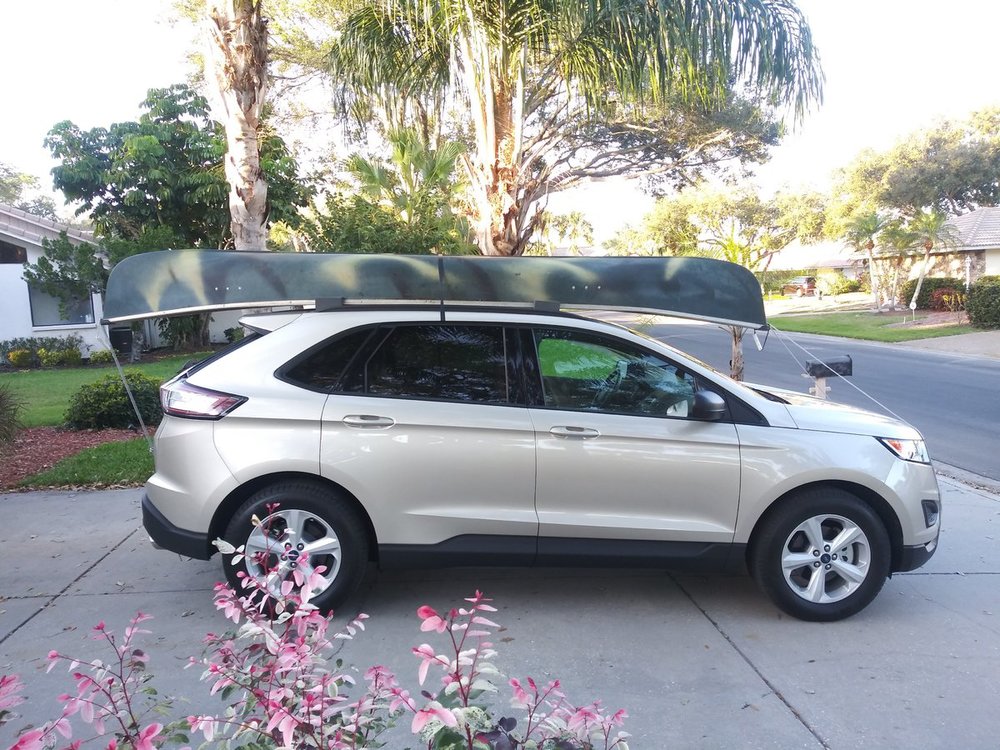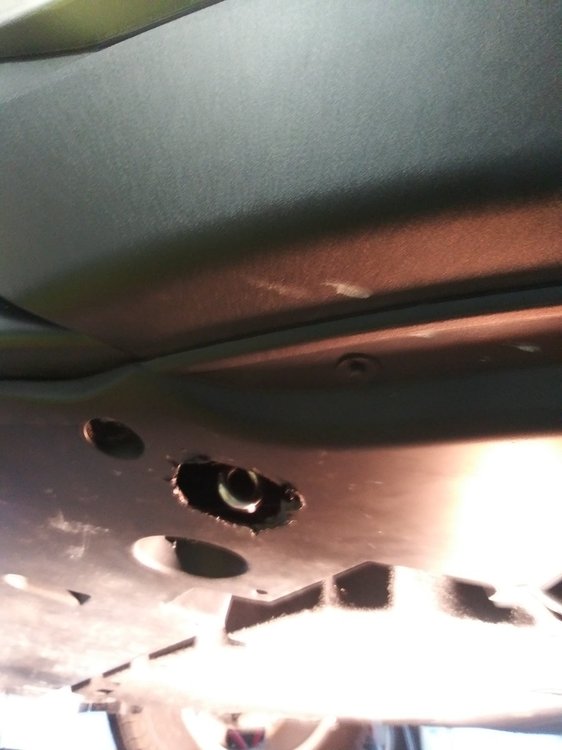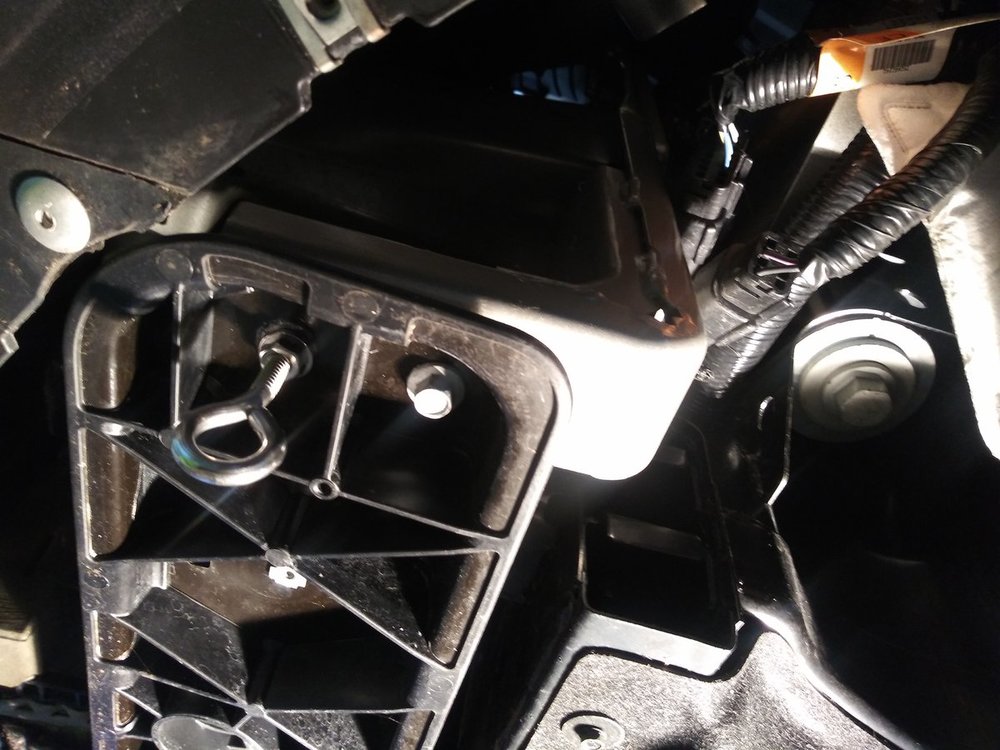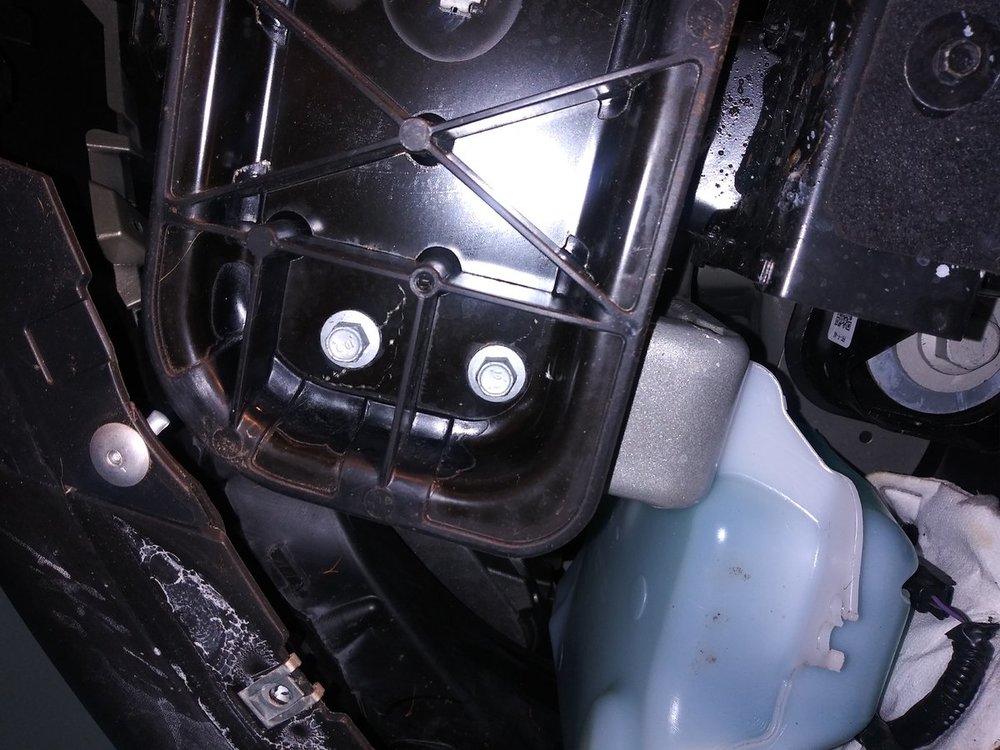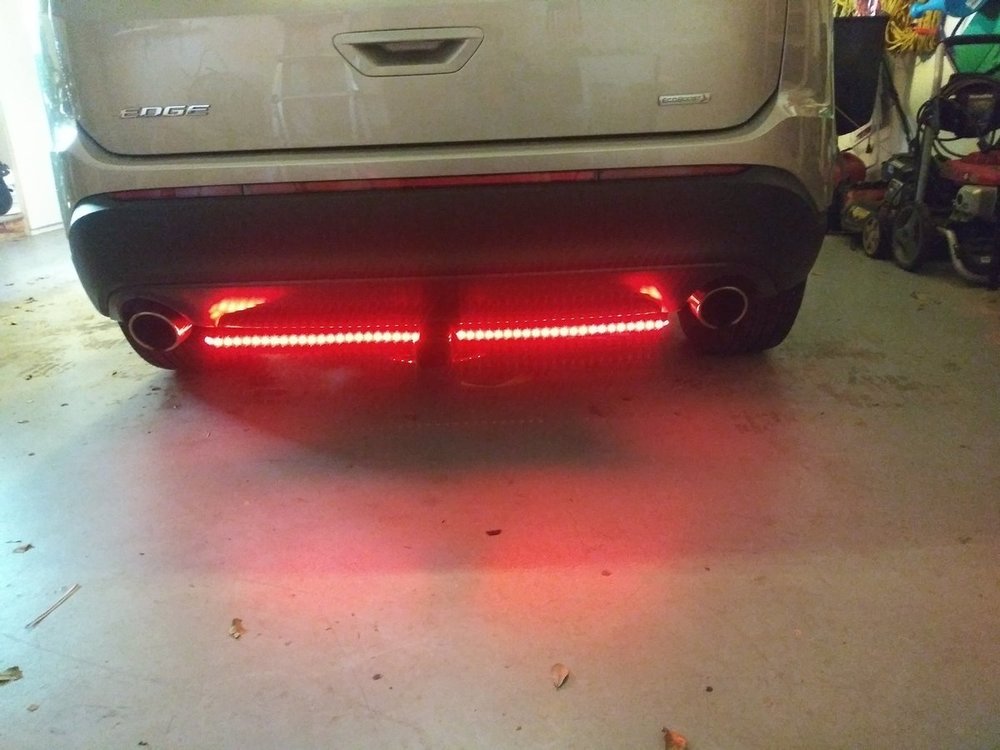
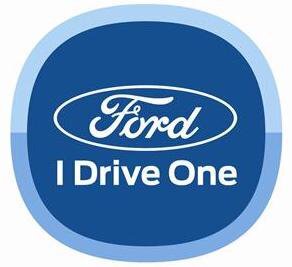
billfl
Edge Member-
Posts
21 -
Joined
-
Last visited
-
Days Won
1
Content Type
Profiles
Forums
Gallery
Everything posted by billfl
-

2016 Ford Edge engine swap 2.0 to 1.6
billfl replied to Apigo200x's topic in Ford Edge & MKX Member Builds
I must address the 800-pound gorilla in the room. Are you playing us? A question was posed; is there something mechanically wrong with the current engine? You've provided hardly any details. Real details would be: Hi, I currently get around 25mpg in mixed driving in my 2xxx Edge with the 2.0 ecoboost. I would like to achieve 35mpg, how do I do that? We of course would then suggest to you to buy a hybrid, or only drive downhill. Some of us here have a lot of experience modifying and working on various types of vehicles. Most of us here enjoy helping each other. Direct questions have been asked of you including working out an RoI, yet your replies ignore that. If you are sincere and seek help/opinions, then please re-read through every post and reply to the questions which have been posed cheers -

2016 Ford Edge engine swap 2.0 to 1.6
billfl replied to Apigo200x's topic in Ford Edge & MKX Member Builds
Is there something mechanically wrong with the current engine thus requiring a swap? If no, then let's consider you get a 5mpg increase in mileage (doubtful but I'll play along) Let's then consider that you drive 15k miles per year. 25 mpg (my average) is 600 gallons @ $2.50 per gallon = $1,500 per year 30mpg (doubtful but we'll play) is 500 gallons @ $2.50 per gallon = $1,250 per year or a savings of $250 per year Now, if you aren't going to do the swap yourself, and need to source it, and want a good engine, and need the computer mods, you're probably looking at around $5,000 give or take. Your RoI (return on investment) of $5,000 cost divided by $250 annual savings would occur in 20 years. Now let reality really hit, in order to get a 2-ton vehicle rolling (torque is needeed) you will have to hit boost sooner with smaller engines, so a custom tune would be needed, and you would have to move that 1.6 engine into premium gas so any mpg gains would be lost by having to get good gas. You could ill afford to have the timing retarded. In fact, premium where I live is about 40 cents or more per gallon vs the crap gas, (87 octane) so in the example above, the 500 gallons would cost $1,450 per year for a savings of $50 per year thus moving the ROI to 100 years. If your engine is OK, and you are looking for huge mpg gains, then you bought the wrong vehicle. If 1 or 2 mpg gain is enough then A: change your driving style B: choose low resistance tires (cost more) and overinflate from factory spec C- replace air filter with a K+N D- heat is the enemy of engines. free up your intake/exhaust flow, get a custom tune on the computer tuned for 91 octane or higher so timing doesn't retard which causes an engine to run hotter. When i put custom tunes into my vehicles, free up the air flow (intake and exhaust) I not only get more power, but better mpg. But, the trade-off in using better fuel (this is going to cause the 87 octane folks to crap on me) ends up costing more out of pocket, but you don't look to save $$ when performance is the goal. -

Problem Solved: front tie down points for roof cargo
billfl replied to billfl's topic in Cargo, Hauling, Roof Racks & Towing
-

Problem Solved: front tie down points for roof cargo
billfl replied to billfl's topic in Cargo, Hauling, Roof Racks & Towing
loosely reinstall splash shield with 3 screws on each side cut access hole for eye finish securing the splash shield total cost= less than $5 to install something that Ford should have included NOTE: do not confuse these as being tow hooks as they are not. They are for lashing cargo when fron tie-down points are needed -

Problem Solved: front tie down points for roof cargo
billfl replied to billfl's topic in Cargo, Hauling, Roof Racks & Towing
Remove front bolt frome each side purchase qty 2 stainless steel eye bolts (I used 1/4 inch) so it would pass through the hole as Ace didn't have metric (eye bolts come with a nut) 3 -1/2 inch size purchase qty 2 stainless lock nuts purchase qty 2 stainless lock washer thread nut all the way to the eye, slide lock washer on top of nut insert bolt into hole and secure top with lock nut thread nut/lock washer and tighten repeat on other side -
I found it hard to believe that I couldn't continue to do the things that I like just because I now drive an Edge. My bike rack wouldn't work due to the spolier, so I installed a Curt hitch and got a rack for the hitch/receiver. Next up was the need to tie the front and back of my canoe. The back probem was solved with the hitch/receiver but the front needed a remedy. Well, about an hour of time (including the run to Ace hardware) and I now have 2 tie down eyes connected to a solid point on the vehicle. Tools needed 5.5 mm socket 7 mm socket 10 mm socket (wrench or socket depending on size nut purchased at hardware store) flat balde screwdriver (for popping off qty 2 push connectors) tin snips or really heavy duty scissors Difficulty level- not at all First remove the splash shield from beneath the front of the car using the 5.5 and 7 mm sockets and removing the @2 push connectors locate the 2 bolts on each side in the picture below. They screw into the metal beam for the front bumper (solid surface)
-

Canoe on roof, where to tie it in the front?
billfl replied to billfl's topic in Cargo, Hauling, Roof Racks & Towing
thanks for the concern. I transported it with blocks on the roof of my Mustang for years. Not a lick of problems and that is a Ford as well, and I'd hope the 2 stage finsih that Ford uses today is at least of similar quality. -

Super Grabby Brakes - 2016 - Build 31-May-2016
billfl replied to evh's topic in Brakes, Chassis & Suspension
replacing the booster (the "power" in power brakes) would make sense if the new booster is more progressive or requires more foot/pedal pressure. If you think about how brakes work (hydraulics), the booster would be the only culprit unless of course every caliper is "stuck" until x amount of pressure is applied and then they fully engage (what are the chances of that) The other option is adapt to the nuance. -

Canoe on roof, where to tie it in the front?
billfl replied to billfl's topic in Cargo, Hauling, Roof Racks & Towing
If my eyes don't deceive me, in that picture, there is a plastic/vinyl protector on the rope that touches the hood -

Canoe on roof, where to tie it in the front?
billfl replied to billfl's topic in Cargo, Hauling, Roof Racks & Towing
I don't have a front license plate bracket. I'm going to put it on the ramps and take off the plastic shielding to see what's there. The canoe weighs a whopping 50 pounds so the foam blocks on the gunwales will work just fine -

Curt hitch installed 2018 SE
billfl replied to billfl's topic in Cargo, Hauling, Roof Racks & Towing
here are the LEDs that are on the hitch. 3M spray adhesive is what I use on the back of all LED installations on vehicles. They are on when the lights are on and are NOT also wired to the brake. I did not buy dual mode LEDs. (For my motorcycle, absolutely ) Wiring dual-mode would not have been any more difficult. I just would have also tapped into the brake light on the left tail light assembly -

Curt hitch installed 2018 SE
billfl replied to billfl's topic in Cargo, Hauling, Roof Racks & Towing
you can see the crossbar which to me is no big, deal but Baskin Robbins had 31 flavors for a reason. I used the bar a place to mount red LED strips so now I have aalmost 4 feet of red LEDs in the back of my vehicle. As a rider, I have my motorcycle lit up like a XMAS tree and add LEDs to all of my 4 wheel vehicles too. Between texting/Facebook distracted drivers and the abundance of elderly here, I'll do as much as possible trying to grab a drivers attention -

Loss of brakes-Part II - The Smoking Gun....
billfl replied to quincy's topic in Brakes, Chassis & Suspension
as is now apparent with the Takata fiasco, auto mfrs do not make all of their own parts. Many are outsourced and common across various platforms. Heck, I had to replace a clutch master cylinder 4 times in a Honda Accord. No matter what "brand" was on the purchased part, it was sourced by the same Chinese manufacturuer and the same bolt sheared off of 3 replacement master cylinders thus causing a loss of all fluid and the clutch would not disengage. There are some junk parts out there and you might have had one which gave up the ghost. Then, stir in a newb tech who didn't properly bleed brakes and your story of woe grew. Any service writer who tells you that a spongey brake pedal is normal, needs to go back to a job asking ..."paper or plastic" ? -

Loss of brakes-Part II - The Smoking Gun....
billfl replied to quincy's topic in Brakes, Chassis & Suspension
brakes are a closed, hydraulic system. If air was introduced into the system, then there is/was a leak somewhere. Here's a tip, if you ever again run into a situation of the pedal going to the floor and it hasn't been slowly progressing to that, pump the brake pedal. There is nothing sinister going on here. A part failed, upon repair, the lines were not properly bled. You press on pedal(who cares if it's power assisted), fluid is pushed toward the calipers which in turn push upon the pads which engage with the rotating rotors to slow the vehicle. If the pedal provides little resistance, then you have air in the lines. Again, it's hydraulics, not rocket science. No need for getting hysterical. It is up to we the owners/operators to get some basic knowledge of important items such as the engine needs oil and we should manually check it. The tires need air and again, manually check them. Brakes need fluid and you guessed it etc etc Our lives and our passengers' lives depend upon it, and the responsibility begins with the person in the mirror -
reseller was Etrailer dot com I installed it myself with the aid of a bottle jack. The only addition that I would make to the instructions is to also remove the muffler heat shield. That makes it easier to reinstall the back valence. I also installed red LED strip lighting across the hitch. Being in FL, having as much rear lighting as posssible is a good thing. I tapped into the left tail-light and fished 2 wires down to the hitch/receiver. Total time including wiring, setup and cleanup= 2 hours.
-
what he said I rent a bunch of different cars as I travel a lot and none exhibit what you describe. I've only had the Edge for a month and it doesn't do what you describe A ton of items are now computer controlled and it's almost like a sensor is delayed in sending a signal
-

Premium gas vs. regular: what's really better
billfl replied to enigma-2's topic in Articles, News & Reviews
Torque is a wonderful thing especially on my V-Twin motorcycle with 2 big jugs, but it doesn't rev very high. As for systems that adapt to higher octane, advancing the timing will result in increased cylinder pressure which in turn generates more torque. IDK how Ford does it with their computer and whether or not they also increase boost when higher octane is introduced and more boost also increases torque (does anyone here know?). Without knowing about boost, timing, when advanced for higher octane fuel, will increase torque thanks to increased pressure. I love these types of discussions as we all benefit from each other. Off topic and I guess I'd best read my owners manual but does Ford state not to use synthetic motor oils? Reducing friction (synthetics) is wonderful for an engine be it longevity as well as performance. I can't imagine a mfr stating that we can't use it. But then again, these are the same folks who go direct injection and don't add an oil separator to the engine. -

Premium gas vs. regular: what's really better
billfl replied to enigma-2's topic in Articles, News & Reviews
For those compouters which do not adapt to octane changes, one could always install a customized tune which advances ignition timing but then you must keep using the octane level fuel for which the tune was created. Another notable item is that engines with significantly retarded timing (think 87 octane and going up hills or full of passengers) tend to run hotter. Heat is the enemy. It comes down to individual choices much like how often does one, if ever, flush their coolant, flush their brake lines, change their oil, use synthetic oil vs dino oil etc. My personal choice, if an engine is capable of producing more power and being more responsive with premium, then premium it is for me. I've torn down enough engines and replaced enough components to see the results of being penny wise, but pound foolish. -
I just picked up a new 2018 SE a month ago. I only put about 7k miles per year on my vehicle (about 5k on the motorcycle) as my vehicles spend a lot of time in the airport garage Anyway, the rear main seal was leaking on my prior vehicle and I wasn't in the mood to replace it as well as the few other items needed. I got the SE for $20k before taxes and state fee so how could I not buy it !!


